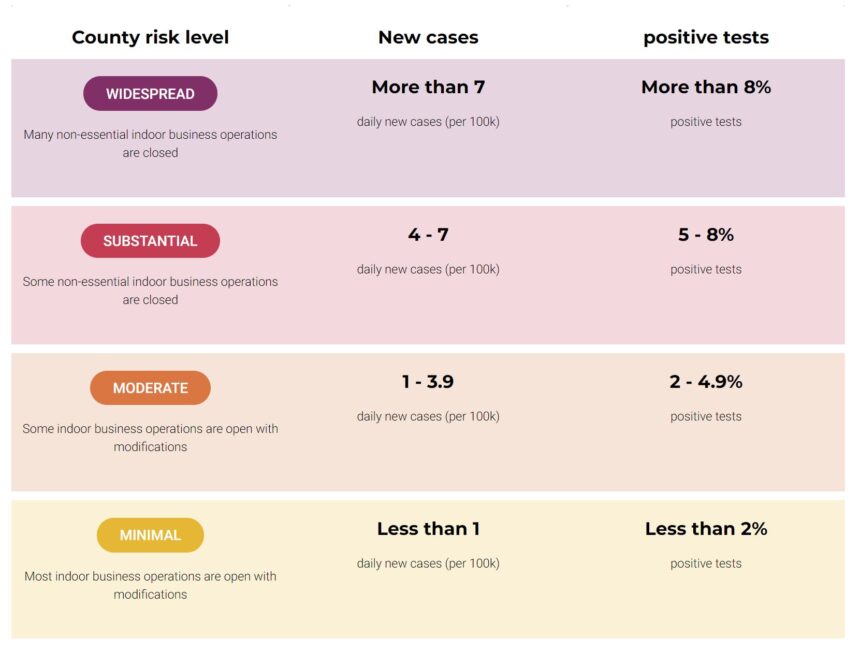Governor Newsom announces new four-tier system to determine COVID-19 spread, reopening among counties

Governor Gavin Newsom held a press conference Friday to share some updates on California's COVID-19 response and the wildfires that continue to burn statewide.
The conference began around 12 p.m.
Fire update
During the conference, Gov. Newsom started by addressing the wildfires. 14,600 firefighters and 2,400 fire engines remain deployed to attack the roughly 730 fires burning statewide. In total, these fires have burned about 1.4 million acres of California land.
The governor said many of these fires were sparked by the nearly 14,000 lightning strikes that struck California over the past 10 days. These strikes started another 30 fires overnight Friday, which fortunately have already been substantially diminished or extinguished.
At this time, about seven people have lost their lives to these wildfires and 2,100 structures have been destroyed. Percentages of containments continue to steadily improve.
COVID-19 Update
Moving to COVID-19, the governor announced the state is replacing its County Monitoring List with a new set of four color-coded tiers that counties will move through based on their number of cases and percentage of positive tests.
Newsom explained this new blueprint will clarify how severe the spread of COVID-19 is within each county to help indicate the risks involved with reopening.
The colors of these tiers include the following: purple for "widespread", red for "substantial" spread, orange for "moderate" spread and yellow for "minimal" spread. The governor said there is no green color because we are not expected to return to a pre-pandemic mindset anytime soon.
Each tier will determine the counties' reopening plans as follows:
- Purple or "Widespread": Most non-essential indoor business operations are closed
- Red or "Substantial": Some non-essential indoor businesses closed
- Orange or "Moderate": Some indoor business operations open with modifications
- Yellow or "Minimal": Most indoor business operations open with modifications
Counties that qualify for the purple category are those with more than 7 new daily cases per 100,000 residents and counties with positivity rates above 8%. Red counties will be those contracting 5 to 7 new daily cases per 100,000 with a 5 to 8% positivity rate. Orange counties are those with 1 to 3.9 new daily cases with a 2 to 4.9% test positivity rate. Lastly, yellow counties are those with less than one new COVID-19 case each day and less than 2% of tests returning positive results.
On Friday, 38 counties are in the purple tier including San Luis Obispo, Santa Barbara and Ventura counties, nine counties qualify for the red tier, eight counties are within the orange tier and three California counties classify for the yellow tier.
The state said counties must remain in a tier for at least 3 weeks before moving forward. Each county must then meet the boundaries of the next tier for two weeks straight before moving up or down. However, there will be an "emergency brake" for concerning factors such as a spike in hospitalizations. At this time, counties may only move up or down one tier at a time.
You can find county-specific data and more details on the four tiers at covid19.ca.gov/safer-economy.
